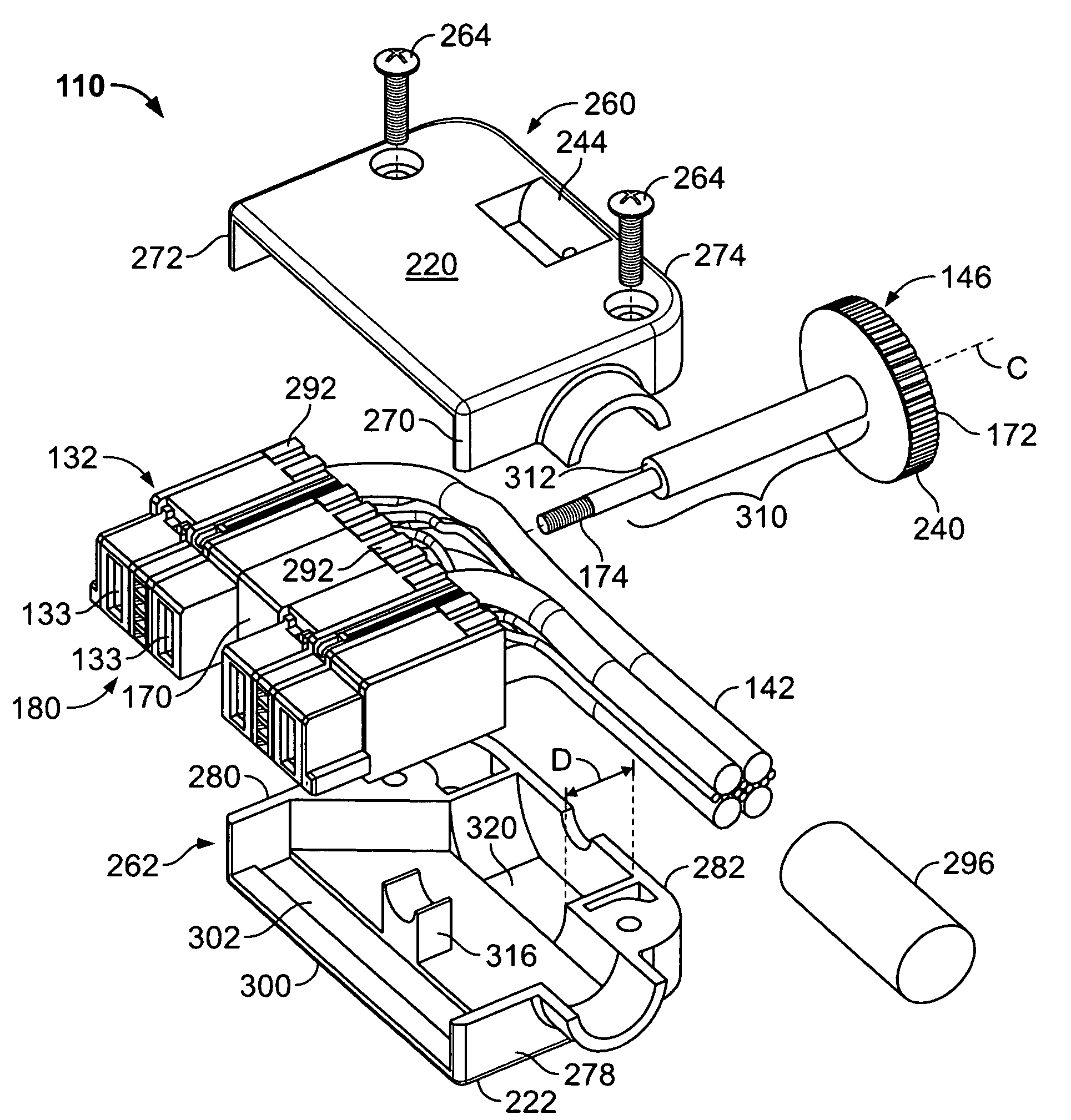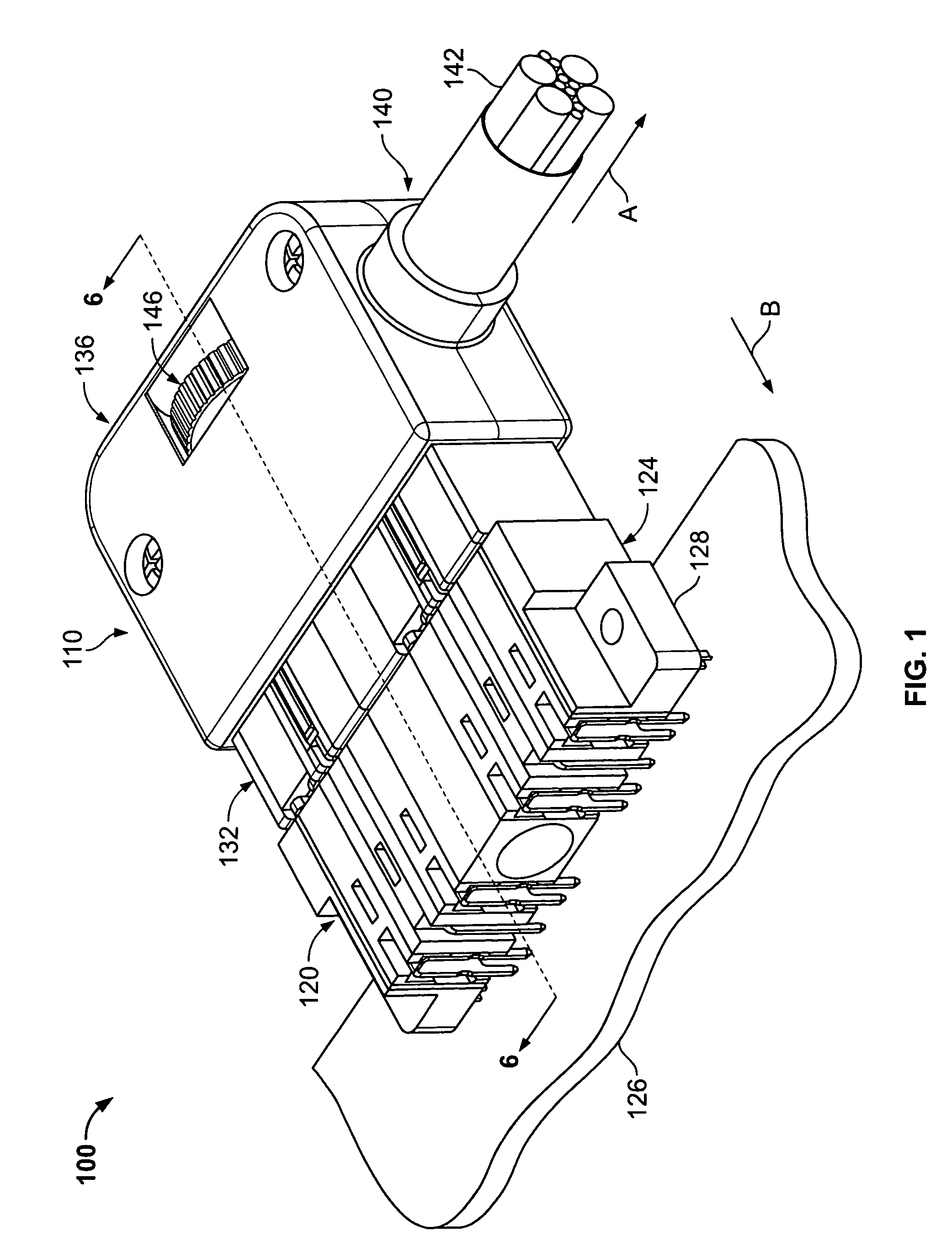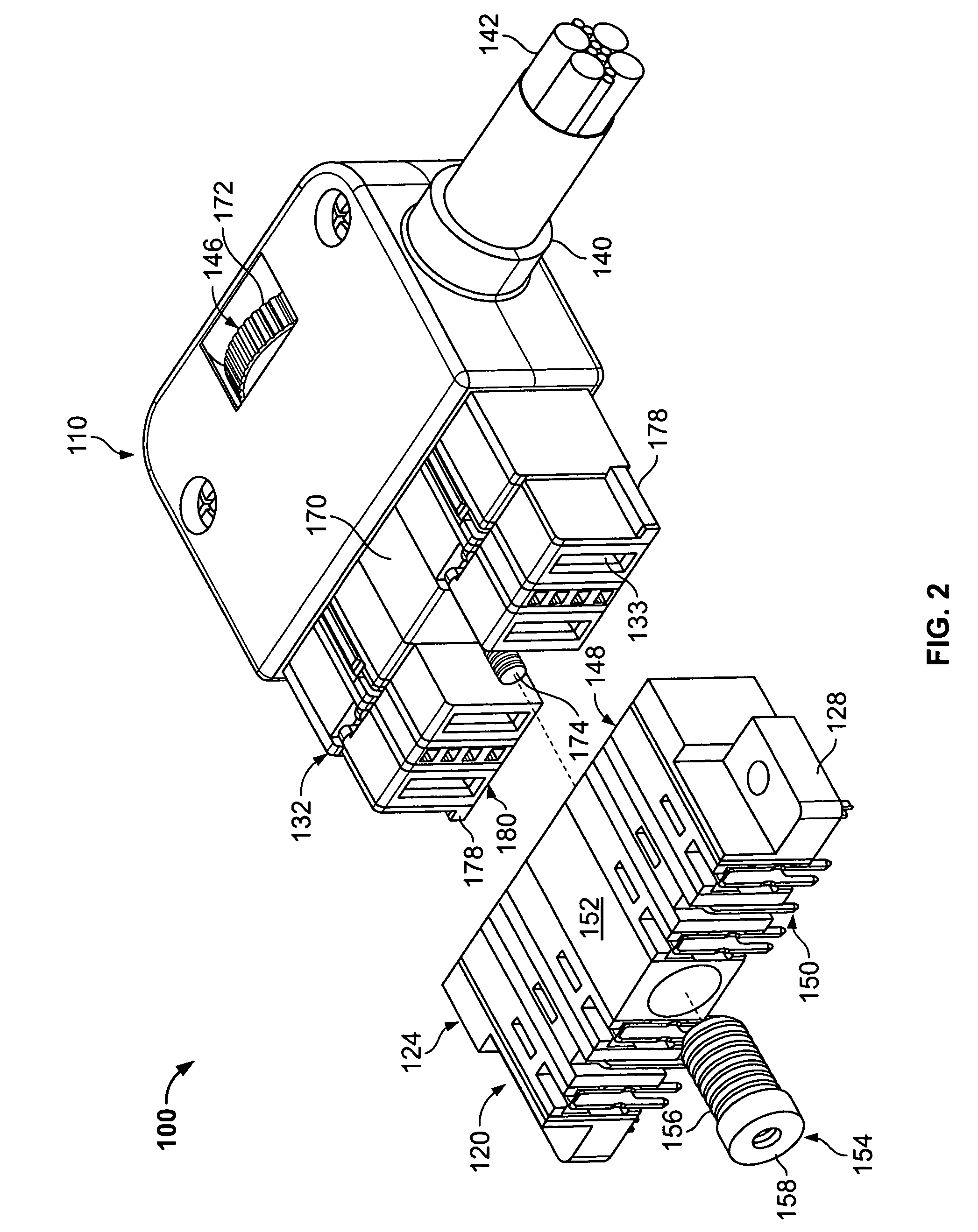Connector with thumb screw retention member
a technology of thumb screw and retention member, which is applied in the direction of connection, electrical apparatus, coupling device connection, etc., can solve the problems of limiting the connector space, affecting the cable routing, and more jackscrews affecting the closure of the cover
- Summary
- Abstract
- Description
- Claims
- Application Information
AI Technical Summary
Benefits of technology
Problems solved by technology
Method used
Image
Examples
Embodiment Construction
[0015]FIG. 1 illustrates a perspective view of a connector assembly 100 formed in accordance with an exemplary embodiment of the present invention. The connector assembly 100 includes a cable mounted connector 110 and a mating connector 120. As shown in FIG. 1, the cable mounted connector 110 is in a mated condition with the mating connector 120. The mating connector 120 includes a housing 124 and, in an exemplary embodiment, the mating connector 120 is mounted on a circuit board 126. The mating connector housing 124 is provided with mounting flanges 128 that may be used with fasteners (not shown) to secure the mating connector 120 to the circuit board 126.
[0016]The cable mounted connector 110 includes a housing 132 that is held in a backshell 136. The backshell 136 is formed with a right angle wire or cable exit 140 such that a cable or wire bundle 142 exits the backshell 136 in the direction of the arrow A which is substantially perpendicular to the mating direction of the mating ...
PUM
 Login to View More
Login to View More Abstract
Description
Claims
Application Information
 Login to View More
Login to View More - R&D
- Intellectual Property
- Life Sciences
- Materials
- Tech Scout
- Unparalleled Data Quality
- Higher Quality Content
- 60% Fewer Hallucinations
Browse by: Latest US Patents, China's latest patents, Technical Efficacy Thesaurus, Application Domain, Technology Topic, Popular Technical Reports.
© 2025 PatSnap. All rights reserved.Legal|Privacy policy|Modern Slavery Act Transparency Statement|Sitemap|About US| Contact US: help@patsnap.com



